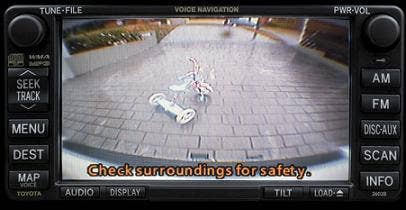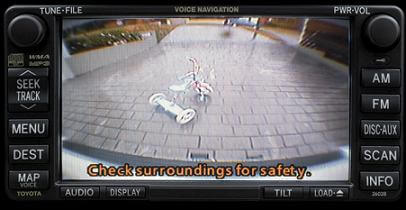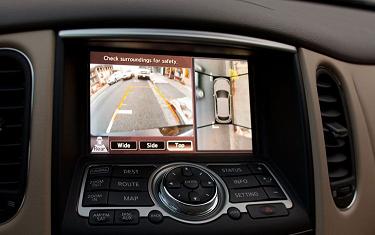Rear View Cameras May Become Mandatory in US. Is Safety Trailing Technology?

Share
The US National Highway Traffic Safety Administration recently proposed a new regulation to make rear-view cameras mandatory in all new US cars by the end of 2014. These systems use cameras embedded in the rear of the car to provide the driver with a video of their blind spots while the vehicle is in reverse. According to the NHTSA, there are around 292 fatalities and over 18,000 injuries each year related to accidental contact with pedestrians while a driver is reversing a car. Deaths associated with these accidents skew dramatically towards the very young and old with 44% of the total among children under 5 and 33% among people over the age of 70. Several major automakers including Ford and Toyota, have come out in favor of the proposal alongside insurance agencies, children's advocacy groups, and automotive electronics manufacturers. Whether or not the NHTSA proposal ever becomes a codified regulation in the US, rear-view camera systems seem like a great idea. The technology behind them is well tested, they are successful in helping drivers avoid fatal collisions with pedestrians, and there are few noted drawbacks to their use. Yet, as with many technologies, social and economic pressures could keep us from adopting these life saving devices.
If you're completely new to the idea of rear-view camera systems, here's an instructional video from Ford. Feel free to skip around.
The NHTSA's proposal would call for 10% of new cars to have rear-view cameras by September 2012, 40% by September 2013, and 100% by September 2014. While that timeline was generated by the agency, the proposal itself was mandated by the Cameron Gulbransen Kids Transportation Safety Act of 2007. Gulbransen was fatally injured by his father while playing behind his vehicle. His eponymous Act required the NHTSA to find ways to prevent such fatalities (as well as improve safety of automatic windows and provide anti-rolling systems on automatic transmissions). As stated in the recent proposal: "The most effective technology option that the agency has evaluated is the rearview video system." Based on test results, such video systems performed better than both modified mirrors and motion detection sensors. If implemented on all new cars, NHTSA estimates that fatalities and injuries would almost be cut by a third to a half. That represents the prevention of probably 100+ deaths per year, 8000+ injuries, and would likely help drivers and insurance companies avoid millions in medical costs and property damage.
Yet speaking strictly in terms of financial considerations the proposal may end up costing more than it saves. Of all the technologies the NHTSA reviewed, the rear-view camera was the most expensive. The agency estimates that adding a new system into an existing vehicle would cost between $159 to $203 if the car had no video screen already installed and $58 to $88 if it did. For new vehicles the price would be slightly higher. According to the LA Times, Ford's rear monitoring systems add about $400 to the price of a car. Individually that may not sound like a huge investment, but taken in total the cost is significant. To outfit the national fleet of 16.6 million new cars NHTSA estimates that the rear-view camera requirement would cost $1.9 billion to $2.7 billion annually. Continued innovation and mass manufacturing may bring that price tag down, but the degree to which that will happen in the next four years is uncertain.
I'm not a political expert, so I find it hard to comment on whether or not the NHTSA will ultimately be able to turn their proposal into an enforced regulation. There are a lot of factors to consider, such as the battered US automotive industry (GM especially), shifting political demographics in Congress, and the continued global economic slump.
Be Part of the Future
Sign up to receive top stories about groundbreaking technologies and visionary thinkers from SingularityHub.


Still, whether or not it becomes mandated for new cars, rear-view camera systems are already becoming an increasingly common safety feature on modern vehicles. Ford used the NHTSA proposal as a cue to announce that they would install rear camera systems on "nearly all" new Ford and Lincoln vehicles by the end of 2011. Toyota has more than 10 different models that can include factory installed rear view camera systems, and all new Lexus models already have that option. Nissan has their Around View Monitor, which displays a complete 360 view of the car to help with parking. Upgrading older vehicles is also very simple. You go to an automotive store, or visit one online, and probably pick up an effective rear-view camera and monitor for $150 or less.
As such, the NHTSA proposal doesn't surprise me in the least. In fact I find it rather shameful that we all don't have these systems in place already. The technology has been here for years. Financial considerations and public perception have probably slowed down adoption. Do you really want to spend $200 on a safety system that you've never needed in the past? It seems like a waste, especially considering how great a driver you are... Maybe I'm being a little presumptuous, but it seems to me that we are more hesitant to adopt new technologies if they are related to safety than if they are related to entertainment or convenience.
Luckily for those 292 dead each year, and the thousands injured, the adoption of rear-view camera systems should become cheaper in the years ahead as the price of digital cameras and LCD screens continues to fall. It's likely that car manufacturers will install them standard more often. Even without the NHTSA mandate, owning a rear-view camera won't be a decision you have to make, it will be one you are just very likely accept. Like buying a car with automatic windows or power locks.
As I discussed with the arrival of Google's robotic car and the recent race of the Stanford robotic car up Pike's Peak, systems like the rear-view camera are probably the first step towards the wide spread acceptance of vehicles that drive themselves. We've already adopted anti-lock brakes, cruise control, and other computer controlled systems on our cars. Driver assistant devices like rear-view cameras are just another tool that will get us trusting automated systems to aid us on the road. The distance between assisting drivers to replacing drivers is considerable, but smaller than we think.
We've had rear-view camera technology for years, but it's taken a while for us to clear the hurdles of costs and consumer awareness/desire. Fully autonomous vehicles have already arrived in early prototypes. They'll be ready sooner rather than later. Like rear-view cameras it will likely take us years to clear economic and social hurdles before we accept them. And like rear-view cameras, we'll probably be much safer once we do.
[image credits: MotorTrend, Nissan]
[video credit: Ford]
[sources: NHTSA Press Release and Proposal (PDF), GovTrack.US, LA Times]
Related Articles

This Portable Wind Turbine Is the Size of a Water Bottle and Charges Devices in Under an Hour

Mojo Vision’s New Contact Lens Brings Seamless Augmented Reality a Step Closer
The Weird, the Wacky, the Just Plain Cool: Best of CES 2020
What we’re reading

